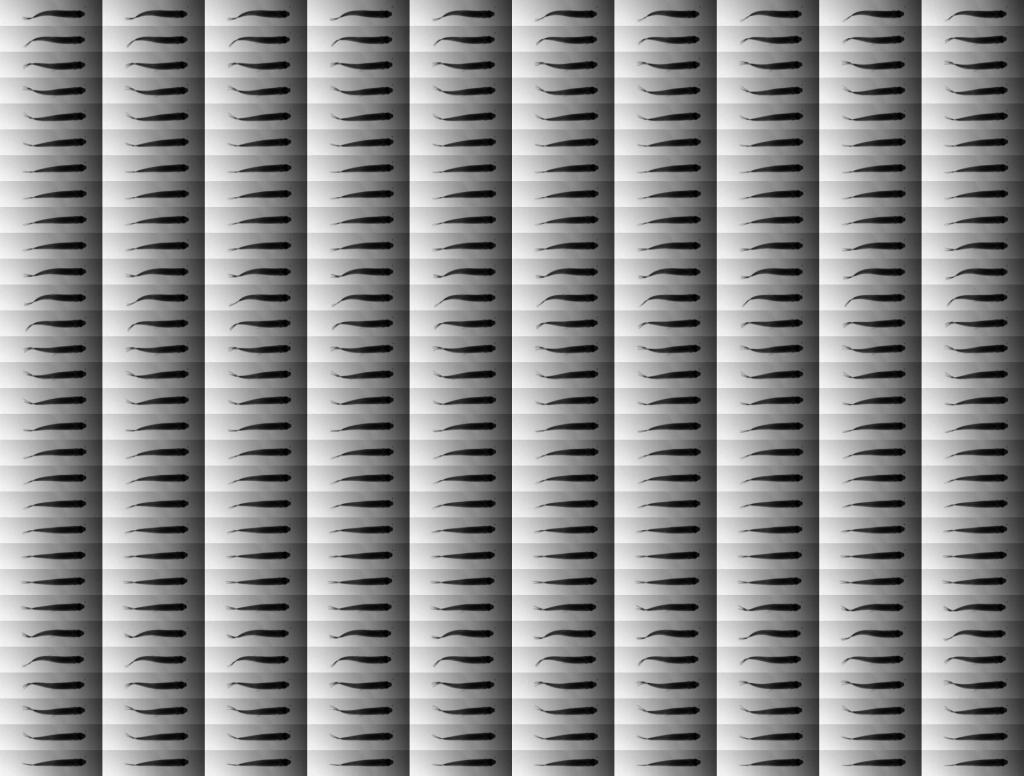
Body and caudal fin undulations are a widespread locomotion strategy in fish, and their swimming kinematics is usually described by a characteristic frequency and amplitude of the tail-beat oscillation. In some cases, fish use intermittent gaits, where a single frequency is not enough to fully describe their kinematics. Energy efficiency arguments have been invoked in the literature to explain this so-called burst-and-coast regime but well controlled experimental data are scarce. Here we report on an experiment with burst-and-coast swimmers and a numerical model based on the observations to show that: (1) fish modulate a unique intrinsic cycle to sustain the demanded speed by modifying the bursting to coasting ratio while maintaining the duration of the cycle nearly constant; and (2) the chosen kinematics correspond to energy-saving gaits over the range of swimming speeds tested.
Burst-and-coast swimmers optimize gait by adapting unique intrinsic cycle
G. Li, I. Ashraf, B. François, D. Kolomenskiy, F. Lechenault, R. Godoy-Diana & B. Thiria
Communications Biology 4, 40 (2021)
[doi:10.1038/s42003-020-01521-z]
preprint: arXiv:2002.09176
Behind the paper blog post: https://ecoevocommunity.nature.com/posts/on-the-intermittent-tail-beat-kinematics-in-steady-swimming-fish